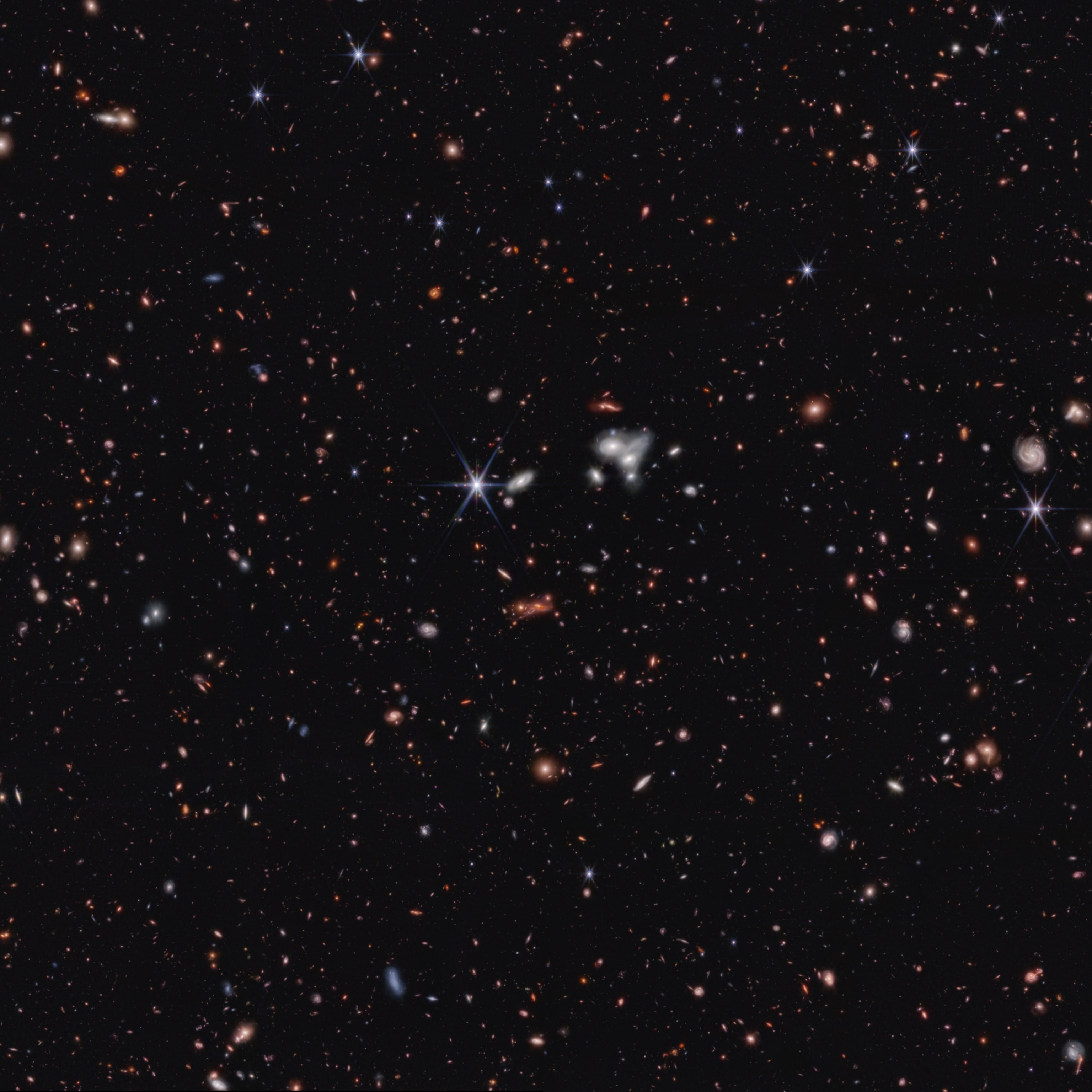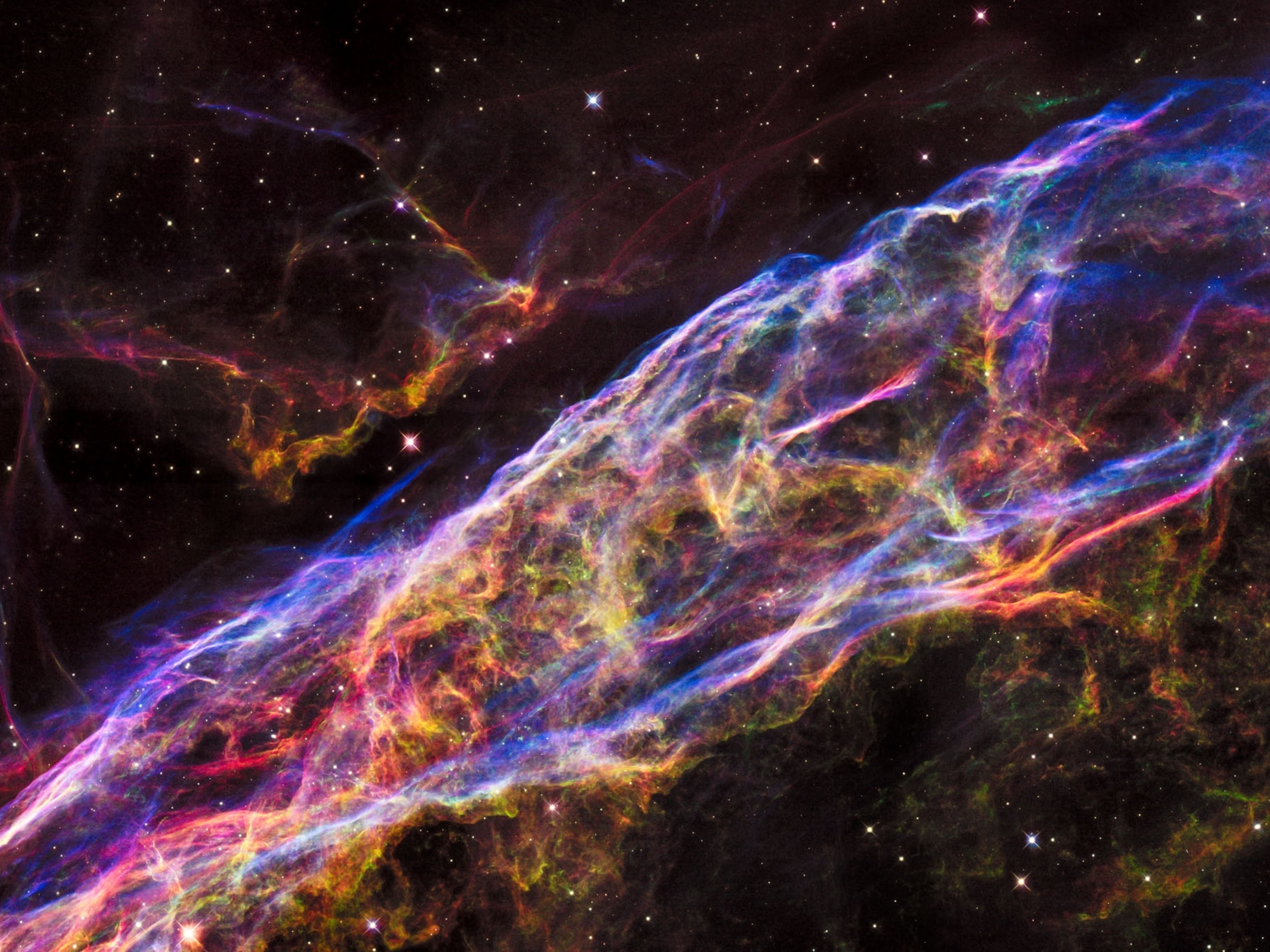Gravitational waves are distortions in the fabric of space and time caused by the movement of massive objects, like sound waves in air or the ripples made on a pond's surface when someone throws a rock in the water. But unlike sound waves pond ripples, which spread out through a medium like watter, gravitational waves are vibrations in spacetime itself, which means they move just fine through the vacuum of space. And unlike the gentle drop of a stone in a pond, the events that trigger gravitational waves are among the most powerful in the universe.
We can hear gravitational waves, in the same sense that sound waves travel through water, or seismic waves move through the earth. The difference is that sound waves vibrate through a medium, like water or soil. For gravitational waves, spacetime is the medium. It just takes the right instrument to hear them.
Detecting gravitational waves on Earth was a challenge that took roughly a century to complete, since the ones that wash through the planet are incredibly tiny.
Detecting gravitational waves
Einstein's general theory of relativity first predicted the existence of gravitational waves, which the famous scientist himself noted in 1916. Though Einstein later doubted the waves' existence, we have had indirect evidence of them since the 1970s.
In 1974, astronomers Joe Taylor and Russell Hulse tracked a pair of spinning stellar corpses called pulsars. As the pair of pulsars spun around each other, they grew closer together, which indicated that they were giving off energy. Calculations made clear that this energy loss came in the form of gravitational waves—a discovery that won Taylor and Hulse a Nobel Prize in 1993.
The first direct detection of gravitational waves took place on September 14, 2015, when the U.S. Laser Interferometry Gravitational-Wave Observatory—aka LIGO—detected the rumble that two colliding black holes gave off 1.3 billion years ago. Scientists formally announced the success in February 2016. In 2017, three of LIGO's founding scientists were honored with the Nobel Prize in physics.
Starting in the 1970s, physicists including Rainer Weiss, Kip Thorne, and Barry Barish sketched out the idea that later became LIGO. The observatory consists of two facilities: one in Louisiana, the other in Washington State. Each L-shaped facility consists of two arms more than two miles long that meet at a right angle.
By bouncing lasers back and forth within each arm, physicists can measure their lengths with an accuracy so astonishing, it would be like measuring the distance between us and Alpha Centauri—the closest star outside our solar system—to within a hair's width. When a gravitational wave passes through Earth, it slightly stretches one of the arms and compresses the other. Those length changes alter the time it takes the laser beams to bounce back and forth, which in turn changes the pattern the beams make where they meet. By tracking the shifting patterns through time, researchers can watch a gravitational wave ripple through the facility.
LIGO has two facilities so that both detectors can try and spot the same event, in effect checking each other's work. In addition, the difference in time between each detection reveals which direction the gravitational waves came from, helping astronomers hoping to pinpoint the source in the sky.
What can we learn from gravitational waves?
The analogy that some physicists use is that gravitational waves let us “hear the universe.” To be clear, sound and gravitational waves are very different things. But by watching events play out in the universe at different wavelengths of light, while also watching out for the vibrations of gravitational waves, we can embark on what's known as multi-messenger astronomy.
Today's gravitational wave detectors can spot waves created by the mergers of neutron stars and black holes. As of the end of 2018, we've seen 10 mergers of black hole pairs and one merger of two neutron stars. As more sightings build up, astronomers will be able to see patterns in the numbers and masses of known black holes, which helps inform theories of how they form and change over time.
But we stand to learn even more from events that emit both gravitational waves and light. On August 17, 2017, astronomers got their first chance to see one of these events, when signals reached Earth from two merging neutron stars—ultra-dense leftovers from dead stars—that spiraled around each other and collided. The union not only released gravitational waves, it also triggered a visible explosion called a kilonova.

The new object that formed—most likely a black hole—fired a jet of high-speed particles through the surrounding haze, creating an afterglow that was visible for days to weeks afterward. This single event provided powerful evidence that colliding neutron stars probably make much of the universe's heavy elements, such as gold and silver. Like electronics and jewelry? Thank neutron stars.
Physicists were also able to use the detection to test Einstein's theory of relativity as never before. Relativity predicts that light and gravitational waves from the same event should travel through space the same way. Other theories of gravity, however, predict that the two should arrive at Earth at markedly different times. In the actual event, the light and gravitational waves arrived within seconds of each other—which means that gravitational waves and light react to obstacles in almost exactly the same way, within one part in a million billion.
Gravitational waves also help clarify other aspects of our universe's foundation. For instance, the Hubble Constant, a measure of how quickly the universe is expanding, has been tricky to pin down. Measurements of the early universe's afterglow yield one number, but estimates made using much younger stars yield another number. Is the discrepancy just a sampling issue or error? Or has the Hubble constant changed over time—suggesting the presence of new, bizarre particles and forces?
By acting as “standard sirens,” gravitational wave detections provide an independent way to calculate the Hubble constant, making them the ultimate referee in this cosmic debate.
Can people feel gravitational waves?
The effect that gravitational waves have on Earth is thousands of times smaller than the width of a proton, one of the particles that makes up an atom's nucleus. That said, gravitational waves weaken the farther they travel, much like ripples on a pond. The closer you are to two merging black holes, the more you'd be stretched and strained.
But as trippy as it sounds, a gravitational wave stretches and compresses a given object as a percentage of the object's size. If Earth were as far from the black-hole merger that yielded LIGO's first detection as it is from the sun, gravitational waves would have stretched the planet by more than three feet. But peoples' bodies would be strained by just a millionth of a meter, far less than the compression you feel when you jump up and land on the ground.
Gravitational waves' proportional nature is why LIGO and other observatories have such large arms. The bigger the observatory, the bigger—and more detectable—the changes from a wave become.
Where are gravitational-wave observatories?
In 2017, the European observatory Virgo opened outside of Pisa, Italy, joining LIGO and Germany's GEO600 detector. And more such facilities are coming online: Japan's KAGRA detector, the first built underground, should be opening soon, and India is making plans to build its own detector.

In addition, there are plans to launch large, space-based observatories. The European Space Agency plans to put a detector called LISA into orbit around the sun in the 2030s. In 2015, the ESA launched the LISA Pathfinder spacecraft to test the necessary technology. Chinese researchers have proposed a similar space-based detector called TianQin.
Meanwhile, astronomers keep monitoring arrays of pulsars to track very low-frequency gravitational waves. The thinking is that as a wave sweeps through, it would temporarily alter the timing of each pulsar's rotation.
In a few decades' time, we'll be able to hear the universe as never before, from the deep rumble of merging supermassive black holes to the zippy chirps of colliding neutron stars. The universe is full of light; now we know it's also full of music.
Related Topics
You May Also Like
Go Further
Animals
- This ‘saber-toothed’ salmon wasn’t quite what we thoughtThis ‘saber-toothed’ salmon wasn’t quite what we thought
- Why this rhino-zebra friendship makes perfect senseWhy this rhino-zebra friendship makes perfect sense
- When did bioluminescence evolve? It’s older than we thought.When did bioluminescence evolve? It’s older than we thought.
- Soy, skim … spider. Are any of these technically milk?Soy, skim … spider. Are any of these technically milk?
- This pristine piece of the Amazon shows nature’s resilienceThis pristine piece of the Amazon shows nature’s resilience
Environment
- This pristine piece of the Amazon shows nature’s resilienceThis pristine piece of the Amazon shows nature’s resilience
- Listen to 30 years of climate change transformed into haunting musicListen to 30 years of climate change transformed into haunting music
- This ancient society tried to stop El Niño—with child sacrificeThis ancient society tried to stop El Niño—with child sacrifice
- U.S. plans to clean its drinking water. What does that mean?U.S. plans to clean its drinking water. What does that mean?
History & Culture
- Séances at the White House? Why these first ladies turned to the occultSéances at the White House? Why these first ladies turned to the occult
- Gambling is everywhere now. When is that a problem?Gambling is everywhere now. When is that a problem?
- Beauty is pain—at least it was in 17th-century SpainBeauty is pain—at least it was in 17th-century Spain
- The real spies who inspired ‘The Ministry of Ungentlemanly Warfare’The real spies who inspired ‘The Ministry of Ungentlemanly Warfare’
- Heard of Zoroastrianism? The religion still has fervent followersHeard of Zoroastrianism? The religion still has fervent followers
Science
- Here's how astronomers found one of the rarest phenomenons in spaceHere's how astronomers found one of the rarest phenomenons in space
- Not an extrovert or introvert? There’s a word for that.Not an extrovert or introvert? There’s a word for that.
- NASA has a plan to clean up space junk—but is going green enough?NASA has a plan to clean up space junk—but is going green enough?
- Soy, skim … spider. Are any of these technically milk?Soy, skim … spider. Are any of these technically milk?
- Can aspirin help protect against colorectal cancers?Can aspirin help protect against colorectal cancers?
Travel
- What it's like to hike the Camino del Mayab in MexicoWhat it's like to hike the Camino del Mayab in Mexico
- Follow in the footsteps of Robin Hood in Sherwood ForestFollow in the footsteps of Robin Hood in Sherwood Forest
- This chef is taking Indian cuisine in a bold new directionThis chef is taking Indian cuisine in a bold new direction
- On the path of Latin America's greatest wildlife migrationOn the path of Latin America's greatest wildlife migration
- Everything you need to know about Everglades National ParkEverything you need to know about Everglades National Park







